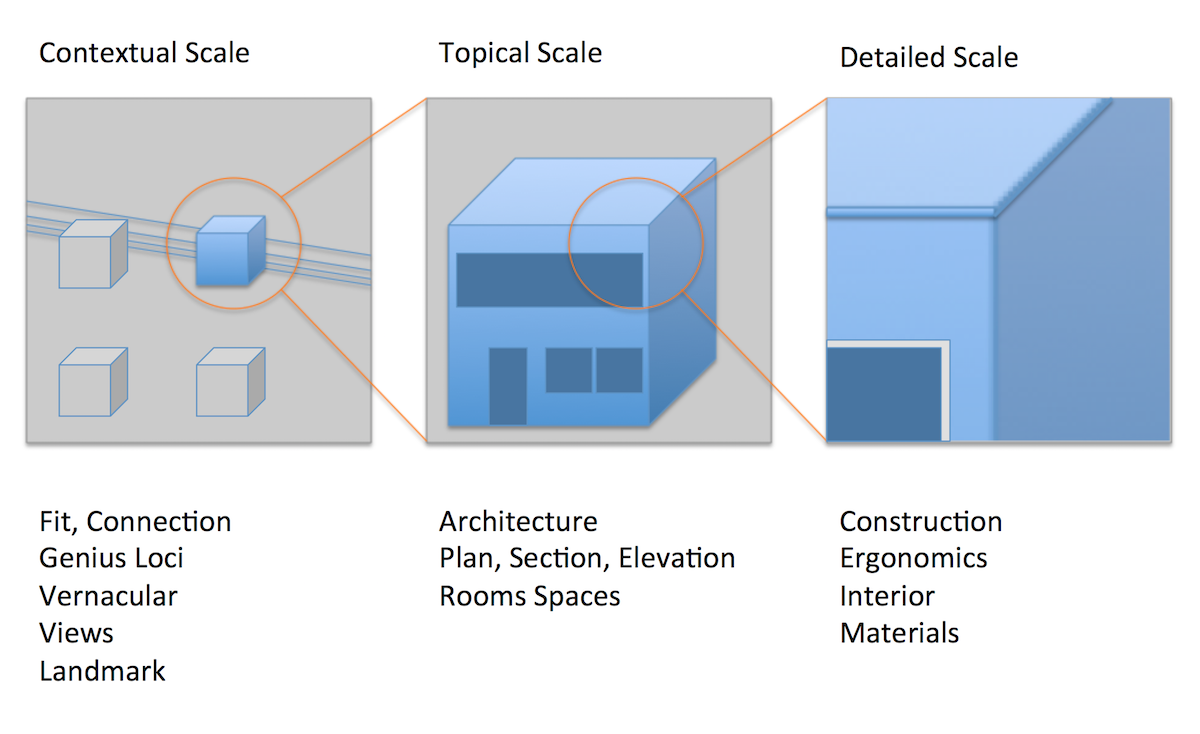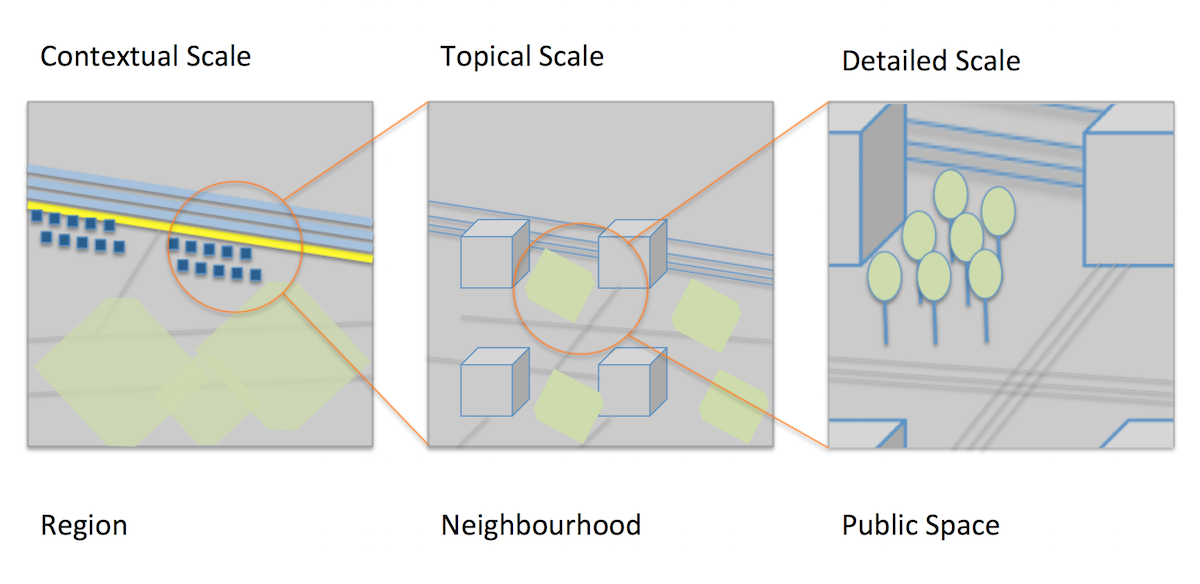5.2.5 Three Scales
Course subject(s)
Module 5 – Scale and Detail
In the past four weeks we have worked on a project by using three scales. The sketch model of the Dream House was worked out by using the ‘topical scale’. The following week we focused on digital models, and we then continued the design process by working on the ‘contextual scale’. This had to do with the fit of the design within its context. Looking out of the windows, we want to see the nice aspects of the context and may wish to exclude the unattractive views. The context scale also helps us to explore how the design fits within the surroundings. This means that we check the scale and characteristics of the neighbouring buildings: we try to fit it together with the landscape, or perhaps we want to make a landmark building which stands out from its context. Last week we focused on the ‘detailed scale’, which made us look at the human body and its ergonomics, the use of specific materials, and the way the different building parts will meet and connect.
These three scales all tell connected but different stories. When someone looks at these three scale models, they should provide each other with complementary information. It should be possible to develop relations in your mind between what you see from one model to the other. There should be a resemblance of the house, but it should not only include the same information – it should also allow a new understanding of the design learnt from approaching it at a different scale.
The scheme below illustrates the connections between the different models, going from the overview to the detail.
When you use the three scales to tell your architectural design story, you will work much more efficiently than if you choose to make one huge model with everything in it.

If you are not designing a single house, but a neighbourhood, or a whole city, you can use a similar trick.
The second figure illustrates the three levels of scale when you are designing a neighbourhood. The contextual scale here is one step larger and it might focus on the larger landscape aspects and the main roads. The topical scale is about the configuration of several residential buildings and the public space in between. The detailed scale is similar to the contextual scale from the previous example above, but the focus is different. Here the focus is on the public urban space, whilst above the focus is on the building.


Models in Architecture by TU Delft OpenCourseWare is licensed under a Creative Commons Attribution-NonCommercial-ShareAlike 4.0 International License.
Based on a work at https://ocw.tudelft.nl/courses/models-architecture-design-physical-digital-models/.



